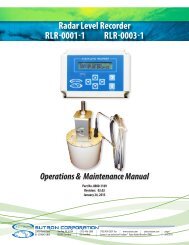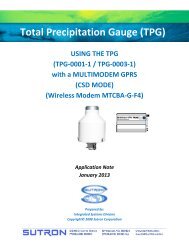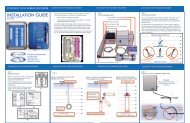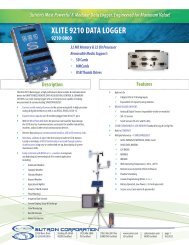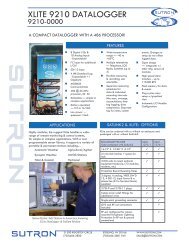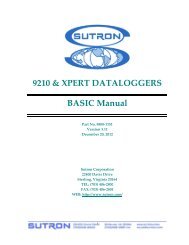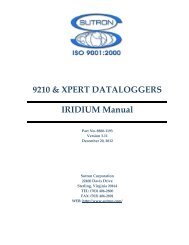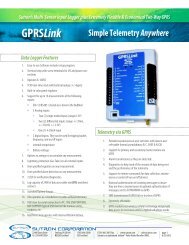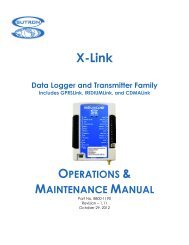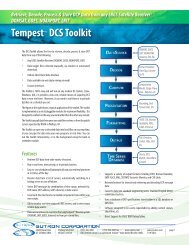9210 & XPERT DATALOGGERS MODBUS Manual - Sutron ...
9210 & XPERT DATALOGGERS MODBUS Manual - Sutron ...
9210 & XPERT DATALOGGERS MODBUS Manual - Sutron ...
You also want an ePaper? Increase the reach of your titles
YUMPU automatically turns print PDFs into web optimized ePapers that Google loves.
Figure 15: Properties of the MBOut Block<br />
The properties of the MBOut block are defined as follows:<br />
Device Type Identifies the type of <strong>MODBUS</strong> device to target, either Serial (for serial<br />
communications, or Tcp for ethernet communications).<br />
Register<br />
Type<br />
Identifies the type of register this block will write. The possible selections are:<br />
Coil and Holding Register.<br />
Base Register Identifies the register to write. When the output type requires that multiple<br />
registers are written, then this number is the base, or lowest, number of the<br />
register set.<br />
Note that the Xpert starts numbering registers at 1, not 0. Some <strong>MODBUS</strong><br />
slaves start numbering at 0. In that case, configure the Xpert to write the<br />
register number that is one higher than the slave‟s register number.<br />
Num Values Identifies the number of values to write to the slave device. Each value<br />
corresponds to a value in the current setup marked by an MBTag that you want<br />
to write into the target device. The “Values…” button opens the dialog used to<br />
configure which local registers should be written into which target registers.<br />
Note that Num Values is NOT necessarily the same as the number of registers<br />
that will be written, since some value types (e.g. ints and floats) require more<br />
than one register be written.<br />
Register(s) Displays the register numbers that will be written in the target device (slave).<br />
This field is read-only and is set based on the current configuration. Use it to<br />
verify you have configured the setup correctly to write the intended slave<br />
registers.<br />
MBOut Values Configuration<br />
Pressing the “Values…” button on the MBOut properties dialog brings up the MBOut Values<br />
dialog (see below). This dialog is used to select local registers to be written into the target slave<br />
registers. The dialog in the figure shows the first value will come from local base register 1,<br />
which has output type “ushort” (making “Most significant word” irrelevant). If you enter a<br />
number for local register that does not yet have a corresponding MBTag, an error will appear in<br />
the “Register(s)” field saying so.<br />
27




